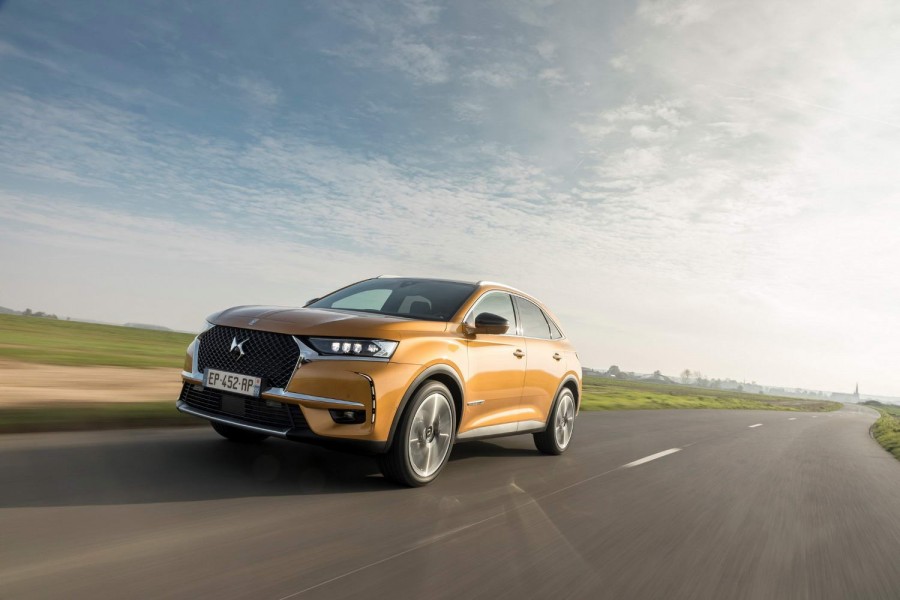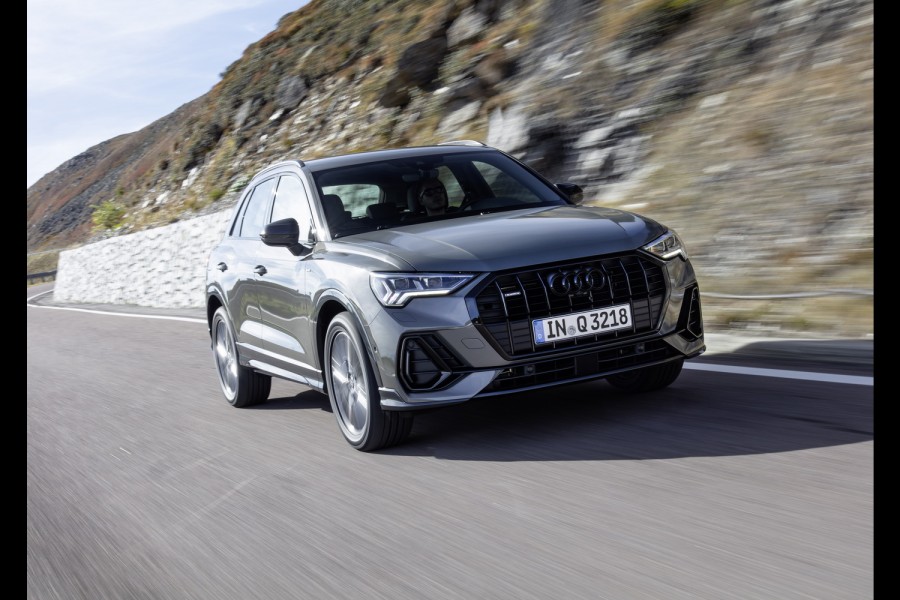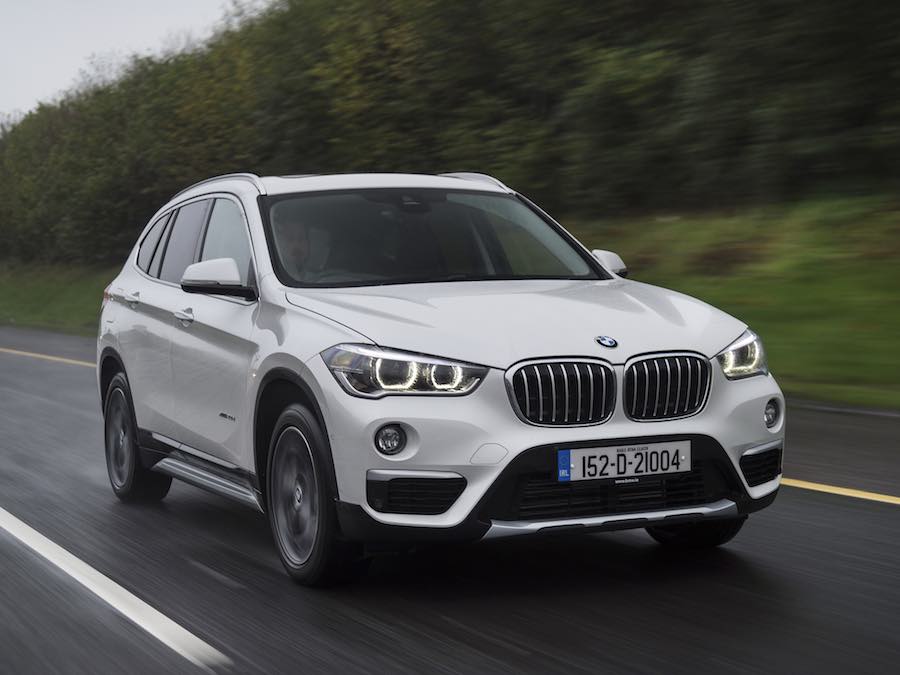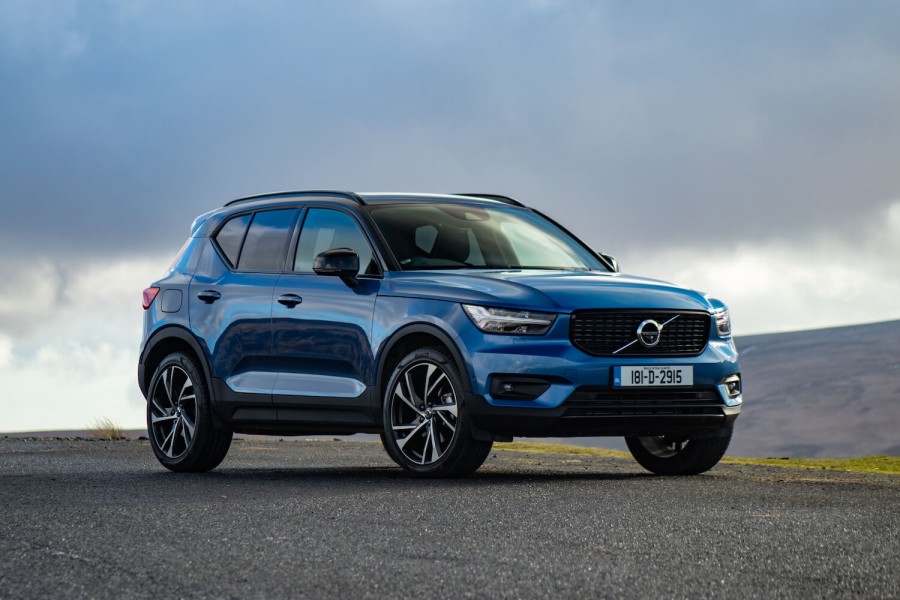DS's plan to get six all-new models (that didn't live lives as Citroens previously) on the road by 2023 kicks into earnest with this, the DS 7 Crossback. It's the first product conceived entirely as a DS and it shows... in a very good way. Pricing will be key to the Crossback's success here in Ireland, because, while it might look like a rival to the Audi Q5/BMW X3/Volvo XC60 class of vehicles in terms of its size, its Peugeot 3008 underpinnings and DS's positioning of it in the market sees it taking on the smaller crossover-SUVs from the premium marques. So, can it convince you to abandon Audi, BMW, Mercedes et al, and go French for your midsized, luxury motor when it eventually does arrive on these shores?
In the metal
It's fair to say that, so far, we've not been massively impressed with the PSA Group's luxury brand, DS, ever since it was hived off from Citroen in 2014. That was mainly because, in the rush to make DS to Citroen what Lexus is to Toyota, the fledgling French brand needed products. And you can't just whip up all-new cars over the weekend. Even if you get all your designer and engineer mates over to le workshop and pull a couple of Red Bull-infused all-nighters.
Thus, what PSA did was lever the Citroen badges off its DS 3, DS 4 Crossback and DS 5 machines, in order to give us, well, the DS 3, the DS 4 Crossback and the DS 5. Which, if we're honest, were never going to convince anybody that DS could go on and challenge the all-conquering Teutonic triumvirate of Audi, BMW and Mercedes, nor stand shoulder-to-shoulder with any of the other premium marques targeting the Germans, like Volvo, Lexus and Jaguar. The DS 3 was an OK supermini hatchback with relatively cute styling; the DS 5 was a total oddball, with much to like (bold interior styling, weird three-sunroof ceiling) and even more to make you sigh forlornly (it had the worst dynamic combination going, of poor ride and so-so handling); and the DS 4 was... it was... well, come on. Honestly? It was dreadful.
The DS 7 Crossback, though, aims to make us forget about those three disappointing 'definitely-not-Citroens' and focus on the here and now. Taking the PSA Group's EMP2 platform (which not only underpins the excellent 3008, but also the larger 5008 from the same company) first of all leaves us with a dilemma. Strictly speaking, the DS 7 sits in the same spectrum as the Audi Q3, BMW X1, Mercedes-Benz GLA and the Volvo XC40. And yet, size-wise (both externally and internally) and in terms of its interior ambience, it feels like it could easily take on the Audi Q5, BMW X3 and Volvo XC60.
This is because we think it looks superb. OK, outside, you could say it's a little SUV-generic - there's more than a hint of Q5 about its general shape and it even looks like the old Mk1 version of the Audi with its hatch fully open, thanks to blanked-off D-pillars, which is most odd. But the crystalline rear LED lights, big alloys and unusual front end, which features three LED light 'cubes' in each cluster that turn through 180 degrees when you start the car up, give the DS 7 enough beauté to make it work in this class. It might not be avantgarde like an old Citroen DS 19 and it might not be as handsome as Volvo's lovely XC40 and XC60 competitors, but is it any less attractive to behold than the smaller Audi SUVs? Or the BMWs X1 and X3? The GLA or Jaguar E-Pace? No, it isn't.
Step inside and it's clear that DS has really made an effort. While Irish specs are yet to be confirmed, our UK test car was an absolute top-grade Ultra Prestige with the 'Opera' interior theme, which means watchstrap leather seats, which are plush and offer a good driving position, Art Black Basalt Nappa leather on the dashboard and door cards, and various other touches that serve to deliver a cabin that is easily as interesting as those found in the Germanic competitors. The diamond motif, which DS likes to peddle as its two-letter badge is all angular and therefore a bit jewel-like, is everywhere; various buttons in the headlining are diamonds, the big and lovely metal window switches on the console have a slight four-line contour shaped into them (as do the speakers for the Focal Electra sound system), the gorgeous 12.3-inch digital instrument cluster in front of the driver presents all its information in... yes, you guessed it, diamond panels.
All of this works wonderfully well and makes the DS feel truly prestige within, a fact that is only enhanced by the sheer size of the cabin. This is where the Crossback feels more like a Q5/X3/XC60 rival, because it dwarfs the interiors of the Q3/X1/XC40 class, offering genuine space for six-foot adults to get comfortable in the back, while its 555-litre boot is a whopper, although a removable floor panel in the cargo area does make it look rather shallow in terms of depth if the panel is in place. Nevertheless, if DS Ireland can get the pricing right, then it will perform the old Skoda trick of offering something the size of a competitor from a class above, for the cost of a rival from the segment below. And that's a very neat skill to possess.
Driving it
At no point will the DS 7 Crossback have you eulogising about why you bought it, over and above a Porsche Macan. It drives like so many SUVs, of varying sizes, tend to do - it's proficient and commendable, if not very exciting.
There is a Sport mode in the four-setting drive control menu, which also includes Eco (avoid it - the DS 7's ultra-slack throttle response in this mode is simply horrid), Normal and Comfort. And the last of these is the key to unlocking the Crossback's major dynamic USP. Sport adds weight, but not feel to what is perfectly pleasant, if unremarkable steering, and it seems to firm up the DS 7's adjustable dampers just a touch too much for any road that's less than pristine in the surface department. Normal is a fine compromise and offers a decent ride, albeit the massive 20-inch wheels of the Ultra Prestige spec often make their presence known by thumping through potholes and the like.
Which means you ought to stick the DS7 Crossback into Comfort, then rip the drive mode switch off the centre console and tape up the resulting gap, meaning that the SUV remains in this setting for eternity. Sadly, the DS will revert to Normal every time you start it up, but brilliantly, Comfort is not between Eco and Normal in the roster of drive modes - instead, it sits between Normal and Sport, as if DS is discouraging you from getting, 'ow do you say, a little too sporty, non?'
And this is where the DS 7 reveals its main party piece: camera-based suspension. Its adaptive dampers work on fixed algorithms in Sport (firm) and Normal (less firm) modes, but in Comfort, a camera mounted near the interior mirror scans the road ahead of the DS for up to 20 metres, works out what lumps and bumps are coming its way (and which of its wheels are going to encounter said imperfections) and then slackens off the requisite dampers at first - to deal with the compression - before firming them up on the rebound so the body doesn't wallow about the place.
This system works like a dream. Here, at last, is a modern French car that has the classic French car pillow-soft ride quality. The gentle, loping grace the DS exhibits at all times when it's in Comfort mode is enough to have you signing on the dotted line for the thing immediately, because only an air-sprung Mercedes or Volvo SUV could hope to get close to this sort of ride serenity. Admittedly, we expect DS Active Scan Suspension (to give it the correct name) to only be standard-fit at the upper echelons of the DS 7's line-up, but even so, it's a technology well worth having.
The ride quality also teams with excellent manners and characteristics in other areas of the Crossback's composition to make for a winning combination. Sound suppression is excellent, to the point that the 225hp 1.6-litre petrol in our test vehicle - an engine that is basically the motor out of a 308 GTi detuned on the output front - was largely inaudible, save for revving it past the point of peak power at 5,500rpm. You don't need to do that, though, because the DS 7 has a lovely wodge of torque low down that makes it perfectly brisk without ever becoming loud or coarse, while the steering, brakes and the smooth eight-speed EAT8 automatic transmission all help to make the Crossback easy to drive in a civilised fashion. Body roll is also quelled to a suitable degree, even in Comfort, although a reasonably low level of grip from the front-wheel-drive chassis doesn't make it the most capable SUV in the corners. And the only 4WD option available in the range will arrive next year, when DS electrifies the Crossback for the E-Tense model.
What you get for your money
At the moment, we don't know how much the DS 7 Crossback will cost in Ireland, as DS doesn't sell its cars officially through standalone dealers here... yet. However, we expect the company to open its first proper showroom, in Dublin, sometime in 2019, so exact prices and specs can't be too far away. In the UK, our nearest right-hand-drive market, the lower models of DS 7 are priced accordingly to the Audi Q3 and the like, but our flagship test car was more akin to a decent specification of Q5, X3 or XC60, hence why it presently feels like the DS 7 is straddling two SUV marketplaces. Once prices are confirmed for Ireland, we'll have a clearer picture of where the French newcomer stands.
Summary
This is DS's most convincing machine yet, and by a huge distance, too. OK, as an all-new vehicle, the DS 7 Crossback always had a good chance of being more impressive than its 3-5-numbered siblings, but the level at which this is operating is higher than we might have expected, even so. Majoring on comfort over handling is the DS's masterstroke, as people traditionally associate French luxury cars with 'waftiness', and the fact the Crossback feels like a much larger and grander machine than its supposed market placement is just the icing on the cake. DS Ireland, get the pricing strategy right and you might very well have a vehicle that can break into the premium-class elite, because the DS 7 Crossback is a hugely likeable and well-rounded machine indeed.
























